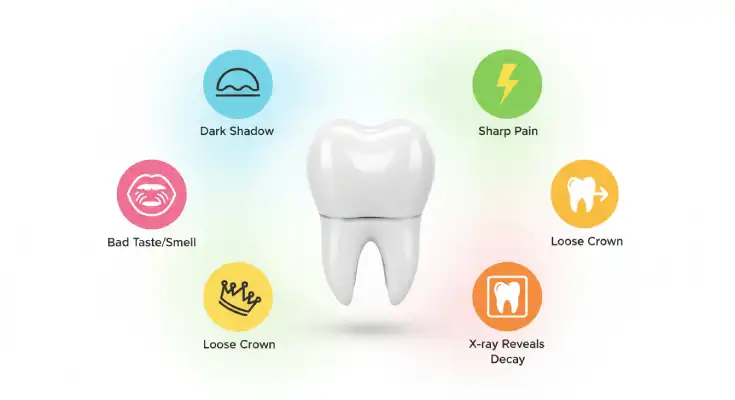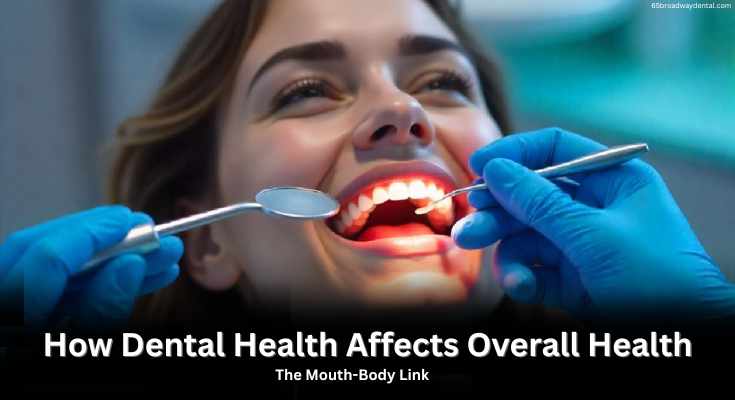Tooth Decay Under Crown Black Color (How I Fixed It)
I still remember the moment I leaned toward the bathroom mirror, smiled… and froze. My $1,200 crown, the one I had proudly paid for two years earlier, looked perfect from a distance.
But up close? There it was: a faint, ugly shadow creeping along the gumline. At first, I thought it was just the lighting. Then maybe a stain. But the more I looked, the more undeniable it became that dreaded tooth decay under crown black color that nobody warns you about.
If this sounds familiar, you’re not alone. Nearly one in five adults has at least one dental crown, and the number one reason crowns fail isn’t because the crown cracks or comes loose; it’s because decay quietly forms underneath. That tiny dark line you see? For many people, it’s the first sign that something is going wrong beneath the surface.
The good news: you’re about five minutes away from understanding exactly why that black color shows up, how serious it actually is (some cases are harmless, some need urgent attention), and what it really costs to fix, without getting pressured into unnecessary treatments.
Let’s get to the truth before the problem gets worse.
Let’s save your tooth and your wallet.
What That Black Color Actually Means
When you spot a dark line or shadow around your crown, it’s easy to panic. But here’s the truth: that tooth decay under crown black color you’re seeing isn’t just a cosmetic issue, it’s your tooth trying to tell you something. And no, it’s seldom “just a stain.”
Most of the time, the black color comes from one of two main problems happening beneath the crown:
1. Decay sneaking under the edge (secondary caries)
This is the most common culprit. Even a tiny gap between your crown and natural tooth is enough for bacteria to slip in. If you want to understand how decay actually forms, here’s a great breakdown of how fluoride helps stop early breakdown: fluoride treatment for tooth decay. Once that happens, decay spreads silently under the crown, eating into the dentin. As the dentin breaks down, it starts to darken, which is what you’re seeing as the black shadow near the gumline.
2. Pulp necrosis, when the inside of the tooth dies
Sometimes the tooth under the crown has been traumatized or weakened. Over time, the inner pulp can die, turning the remaining tooth structure dark from the inside out. That discoloration can show through the crown edges, making it look like decay even if the outside seems fine.
Here’s the quick science behind both:
Bacteria love dark, sealed-off spaces. When they get trapped under a crown due to a poor seal or micro-leak, they release acids and pigments. These pigments soak into the dentin, creating that unmistakable black tint.
And let’s clear up a common myth while we’re here:
It’s not always your fault. You can brush, floss, rinse, and still end up with problems if the crown wasn’t sealed perfectly from day one. Even the smallest imperfection can create a hidden tunnel for bacteria.
5 Red-Flag Symptoms You Should Never Ignore
When it comes to crowns, problems rarely fix themselves. If you’re seeing that tooth decay under the crown’s black color or feeling something “off,” your tooth is sending warning signals you shouldn’t let slide. Here are the top red flags to watch for, and when to get help.

Dark line or shadow at the gumline
This is the classic early sign of decay sneaking underneath. It usually means bacteria have found a gap and are slowly damaging the tooth.
Urgency meter: Book a visit this week.
Sharp pain with hot, cold, or sweets
Temperature sensitivity often means the decay is getting closer to the nerve or the seal around the crown is failing.
Urgency meter: See your dentist in the next 2–3 days.
Bad taste, bad breath, or swollen gums
If you notice a weird taste or gum puffiness near the crown, it might be your gums reacting to bacteria. This guide on gum disease warning signs explains how these symptoms start and when to act.
Urgency meter: See your dentist today.
The crown feels loose or wobbly
This usually means the cement is breaking down, and when that happens, bacteria rush in fast. A loose crown can lead to severe decay in days, not weeks.
Urgency meter: Emergency, go ASAP.
Zero pain, but black on X-ray (the silent killer)
Decay under a crown doesn’t always hurt. Many people feel completely fine while the tooth is breaking down underneath.
Urgency meter: Priority appointment this week.
Listening to these symptoms early can prevent expensive treatments and save your natural tooth before the damage becomes irreversible.
For a full guide on what symptoms shouldn’t be ignored, check out these signs you need a dental checkup.
How Dentists Figure It Out in 2026
If you walk into a dentist’s office worried about that tooth decay under crown’s black color, the good news is that finding the real problem today is faster, clearer, and way less stressful than it used to be.
Here’s exactly what happens during your appointment:
1. Quick visual exam
Your dentist will start with a simple look and a gentle poke around the gumline. They’re checking for gaps, soft spots, or signs of leakage around the crown. This part takes less than a minute.
2. A digital X-ray, 10 seconds, zero pain
Modern X-rays capture the area beneath your crown with incredible clarity. They’ll show whether decay is hiding under the crown, if the tooth nerve is in trouble, or if there’s bone loss starting. It’s the fastest way to confirm what’s really going on.
3. Intraoral cameras
Intraoral cameras take close-up photos that show details the naked eye can’t see. If you’ve never experienced a modern dental visit, here’s exactly what happens during a professional dental cleaning.
4. AI-powered decay detection
In 2026, many clinics will use AI scanners that highlight even the earliest stages of decay. They can spot problems long before you feel pain or notice discoloration.
The best part?
It’s painless, quick, and most people walk out knowing exactly what’s happening and what the next steps are. No guessing, no waiting, just clear answers in minutes.
Your Fix Options (With Real 2026 Costs)
Once your dentist confirms what’s causing that tooth decay under crown’s black color, the next question is the one everyone cares about: How do we fix it, and how much will it cost?
The good news is that most cases are treatable, and the earlier you act, the cheaper and easier it is.
Here’s the simplest breakdown of your real options in 2026:
| Stage | Treatment | Cost (NYC Area) | Visits | Tooth Saved? |
|---|---|---|---|---|
| Early decay | Clean under crown, fill cavity, re-cement crown | $500–$1,200 | 1–2 | Yes |
| Black = pulp death | Root canal + new crown | $1,800–$3,500 | 2–3 | Yes (95%) |
| Too far gone | Extraction + implant or bridge | $3,000–$6,000 | 3–6 | No |
How to Prevent This From Ever Happening Again
Once you’ve dealt with the problem, the real win is making sure you never see that tooth decay under crown black color again. The good news? Prevention is way easier than treatment, and it comes down to a few simple habits you can actually stick to.
1. Floss under the crown every night
This is the #1 way to stop bacteria from slipping under the crown edge. A water flosser makes this almost effortless. Most people who switch say it’s “life-changing” for gumline cleaning.
2. Use fluoride toothpaste + an antimicrobial rinse
Fluoride strengthens the tooth under the crown, while an antimicrobial rinse reduces the bacteria that cause decay. It’s a simple 30-second step that saves hundreds in dental bills.
3. Drink coffee, tea, and wine through a straw
Not for aesthetics, but to keep dark liquids away from the gumline. Less exposure means less plaque buildup around the crown.
4. Wear a night guard if you grind
Grinding creates micro-gaps between the crown and tooth. These tiny openings become perfect hiding spots for bacteria. A soft night guard protects the crown seal and stops cracks before they start.
5. Never skip your 6-month checkups
X-rays catch crown leaks and early decay long before you feel pain. Most big dental problems start small, and early scans save the tooth.
If you spot any black discoloration, feel even mild pain, or just want peace of mind about your crown, don’t wait it out. Problems under a crown can move fast, and catching them early can save your tooth and a lot of money.
65 Broadway Dental is consistently rated among the best cosmetic dentists in NYC, offering same-day digital X-rays and personalized crown evaluations.
For a quick, no-pressure check, book an appointment at 65 Broadway Dental. They offer same-day digital X-rays, and if you mention this post, you’ll get a free consultation for crown concerns.
Sealants + fluoride varnish every 6 months
These two steps dramatically reduce cavity risk and protect molars during growing years.
Conclusion
Seeing a dark shadow or discoloration under a crown can feel scary, but it’s almost always fixable, especially when you catch it early. Whether it’s minor decay, a leaking seal, or a deeper issue with the nerve, today’s dental technology makes diagnosing and treating it faster, clearer, and more comfortable than ever. And with a few simple habits, you can dramatically reduce the chances of that black line ever returning.
Your smile is worth protecting. Listen to the early warning signs, take action when something looks off, and give your dentist the chance to save the tooth before things get complicated.
FAQs
1. Why did my tooth turn black so fast?
Black discoloration can appear quickly once bacteria slip under the crown. Decay spreads faster in the sealed-off space beneath a crown, and by the time you see the dark color, the dentin may already be breaking down.
2. Can I whiten a black tooth under a crown?
No, whitening won’t reach the tooth beneath the crown. If the tooth has darkened, it’s usually due to decay or pulp death. The solution is dental treatment, not whitening products.
3. Will insurance cover this?
Most insurance plans cover part of the treatment, especially if decay or infection is involved. Root canals and new crowns are typically partially covered, but cosmetic replacements usually aren’t.
4. Is it safe to leave it alone?
No. Leaving it untreated allows decay to spread deeper, often turning a small fix into a root canal or even an extraction. Black discoloration under a crown is always a sign to get checked.
5. How long do new crowns last?
Modern crowns last 10–15 years on average, but with good habits and regular checkups, many last 20+ years. Proper flossing, fluoride use, and avoiding grinding make a huge difference.

Dr. Alexander Heifitz (Author)
Dr. Alexander Heifitz is the founder of 65 Broadway Dental in NYC, where he combines advanced dental expertise with a patient-first approach. He specializes in cosmetic and restorative treatments such as dental implants, veneers, Invisalign, and smile makeovers, helping New Yorkers achieve both oral health and confidence.
Booking An Appointment
Looking for a reliable dentist in Downtown NYC? Whether you need a routine cleaning, urgent care, or a full smile transformation — we’ve got you covered. We accept most PPO insurance plans and offer flexible scheduling.
+1 (212) 430-3888
Call for appointment
Walk-ins Welcome / Same-Day Appointments Available


